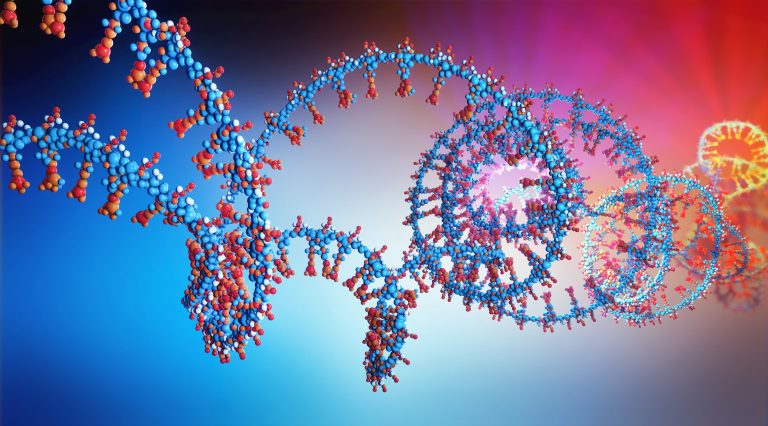
A wide variety of cancer types have been linked to the misregulation of long non-coding RNA (lncRNA) genes. Now, a team from Cold Spring Harbor Laboratory (CSHL) showed that a particular lncRNA plays a role in mammary tumor cell proliferation, migration, and invasion, both in vitro and in vivo. In animal experiments, the growth of metastatic tumors was reduced by a molecule designed to target that RNA and trigger its destruction. The work demonstrates that the lncRNA represents a potential therapeutic target to alter breast cancer progression.
The study was reported in the journal Nature Communications in a paper titled, “MaTAR25 lncRNA regulates the Tensin1 gene to impact breast cancer progression.”
In 2016, David Spector, PhD, professor and director of research at CSHL, and colleagues, identified dozens of lncRNAs molecules that were more prevalent in breast cancer cells than in noncancerous cells of the same type. The current study investigated how one of these, Mammary Tumor-Associated RNA 25 (MaTAR25), impacted breast cancer cells’ behavior in mice.
Experiments by Kung-Chi Chang, a graduate student in Spector’s lab, indicated the molecule contributes to cancer’s progression in several ways—by accelerating cells’ growth as well as their ability to migrate and invade tissue. These effects may be due to changes in the activity of the Tensin1 gene, which the team found is one of MaTAR25’s targets.
MaTAR25 functions by interacting with purine rich element binding protein B (PURB), and associating with Tensin1 to regulate its expression in trans. The Tensin1 protein product, the authors noted, is “a critical component of focal adhesions linking signaling between the extracellular matrix and the actin cytoskeleton.” Tensin1 helps connect a cell’s internal cytoskeleton to the external matrix that surrounds it and is therefore positioned to influence a cell’s movement as well as its growth-regulating pathways.
To eliminate MaTAR25, the researchers designed a small piece of nucleic acid that recognizes and binds to its sequence. Once bound, the antisense oligonucleotide alerts an enzyme inside cells to destroy the lncRNA. When the researchers injected this molecule into the bloodstream of mice, it reached tumor cells and degraded most of the MaTAR25, with dramatic effects.
Knockout of MaTAR25, the authors noted, results in down-regulation of Tensin1 leading to a reorganization of the actin cytoskeleton, and a reduction of focal adhesions and microvilli.
Spector said: “When we did histology on the tumors, we found that they were very necrotic, meaning there was a lot of cell death after this RNA was degraded. And obviously, that’s an important finding, but equally, if not more important, we found a very significant reduction in metastasis to the lungs. So this, you know, really gave us some very exciting data that this RNA molecule has some potential as a therapeutic target.”
The team also identified LINC01271 as the human ortholog of MaTAR25, and importantly, they found that high levels of an analogous RNA called LINC01271 are associated with more aggressive disease in patients’ breast tumors. The findings demonstrate that LINC01271 represents a potential therapeutic target to alter breast cancer progression and the team is now investigating whether an antisense oligonucleotide that targets LINC01271 can interfere with tumor growth and metastases in patient-derived breast cancer models.











